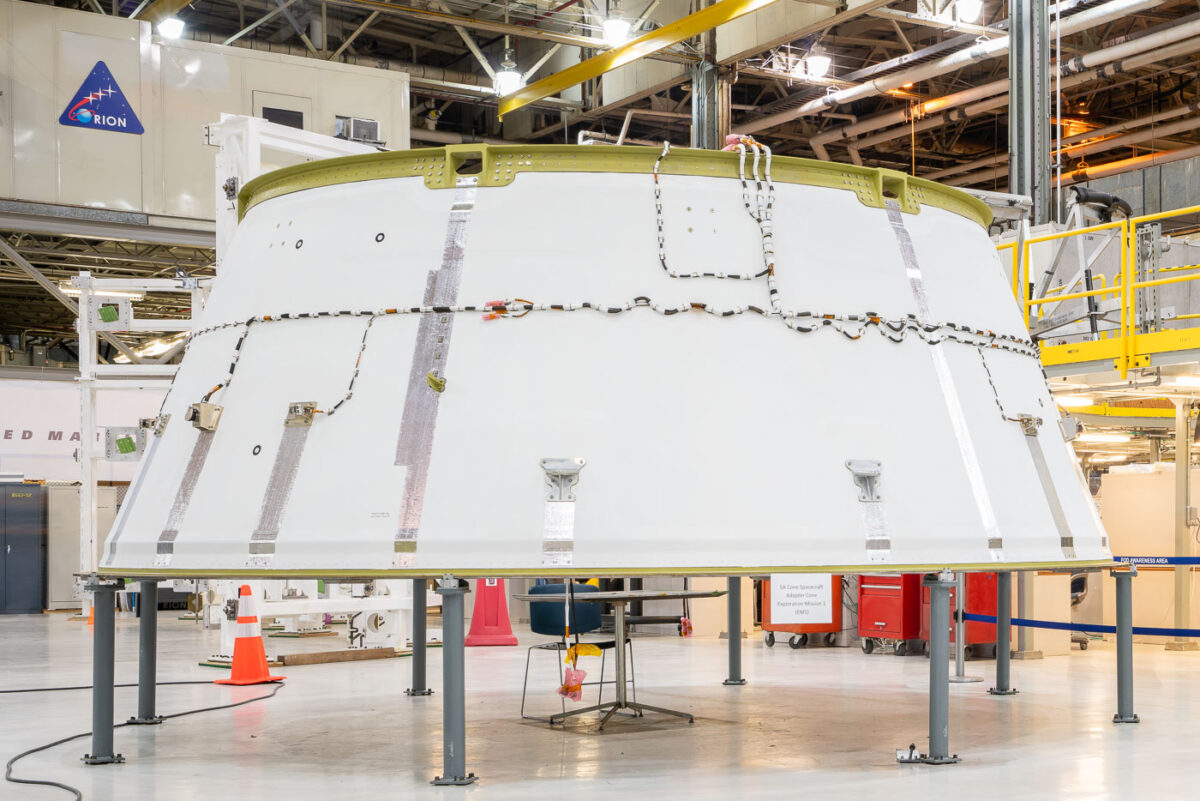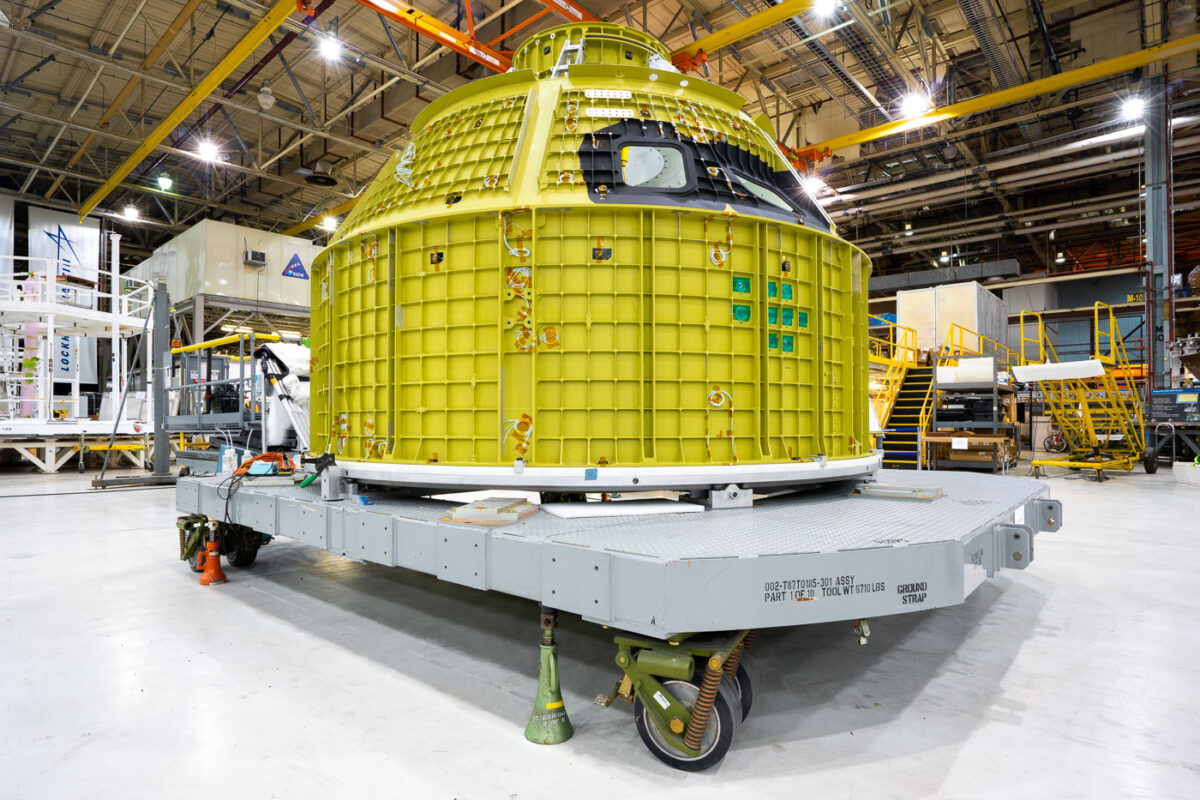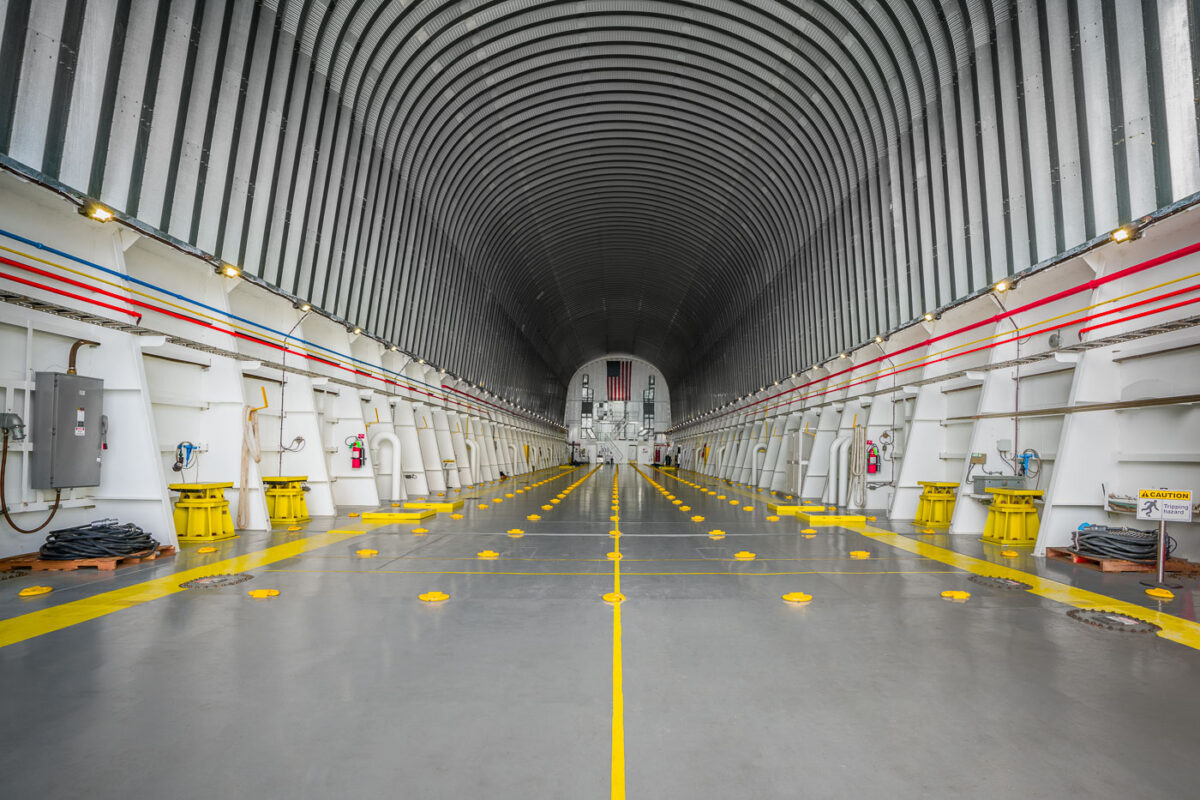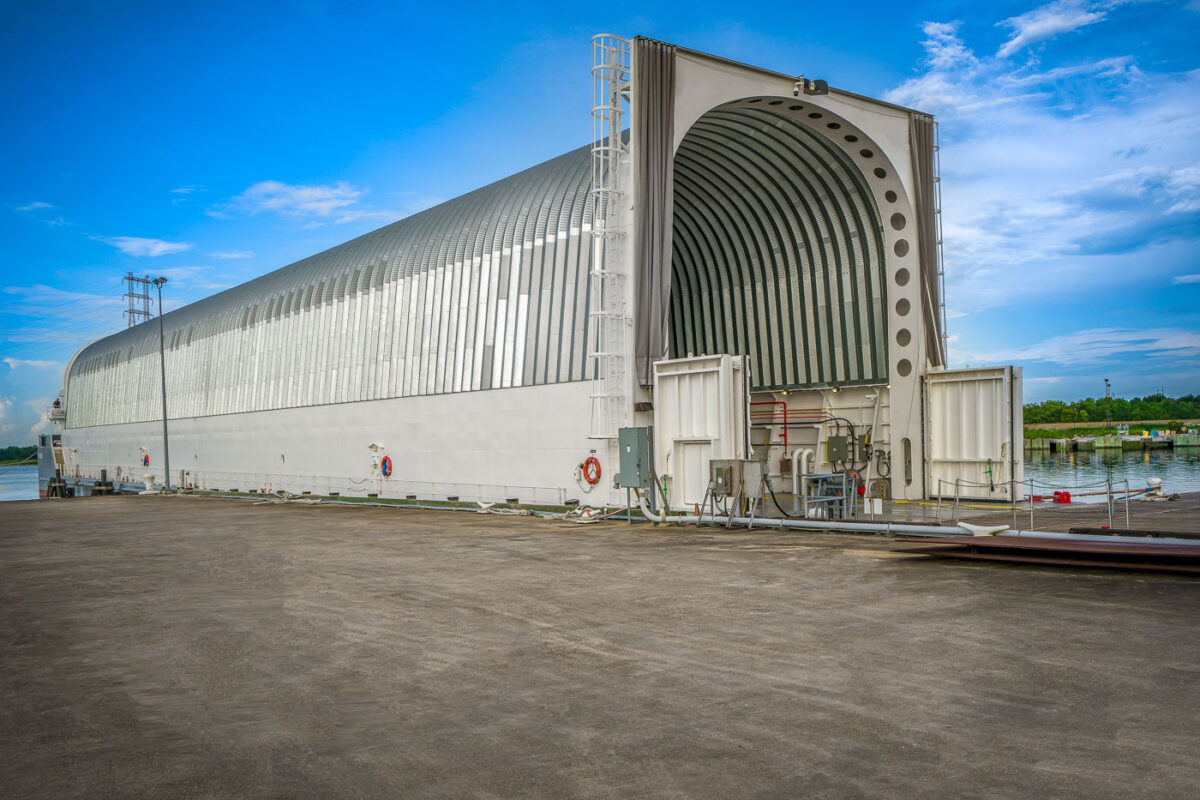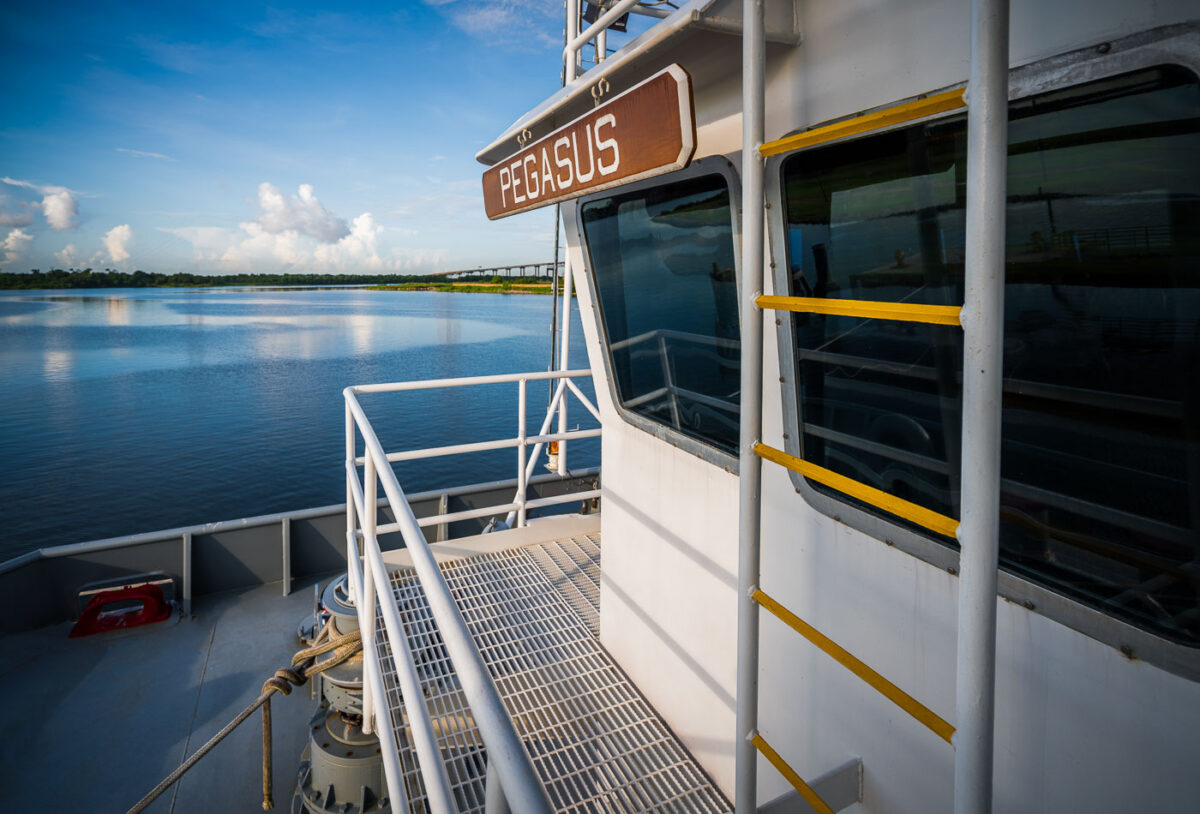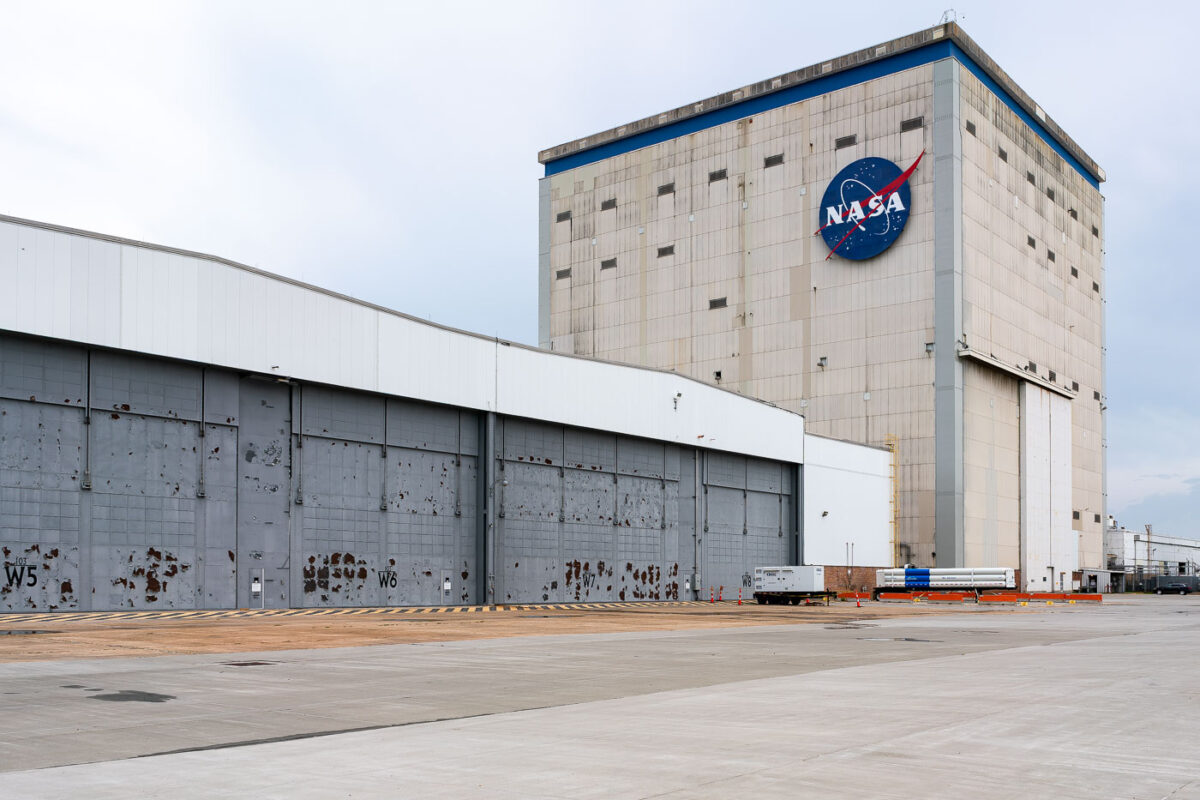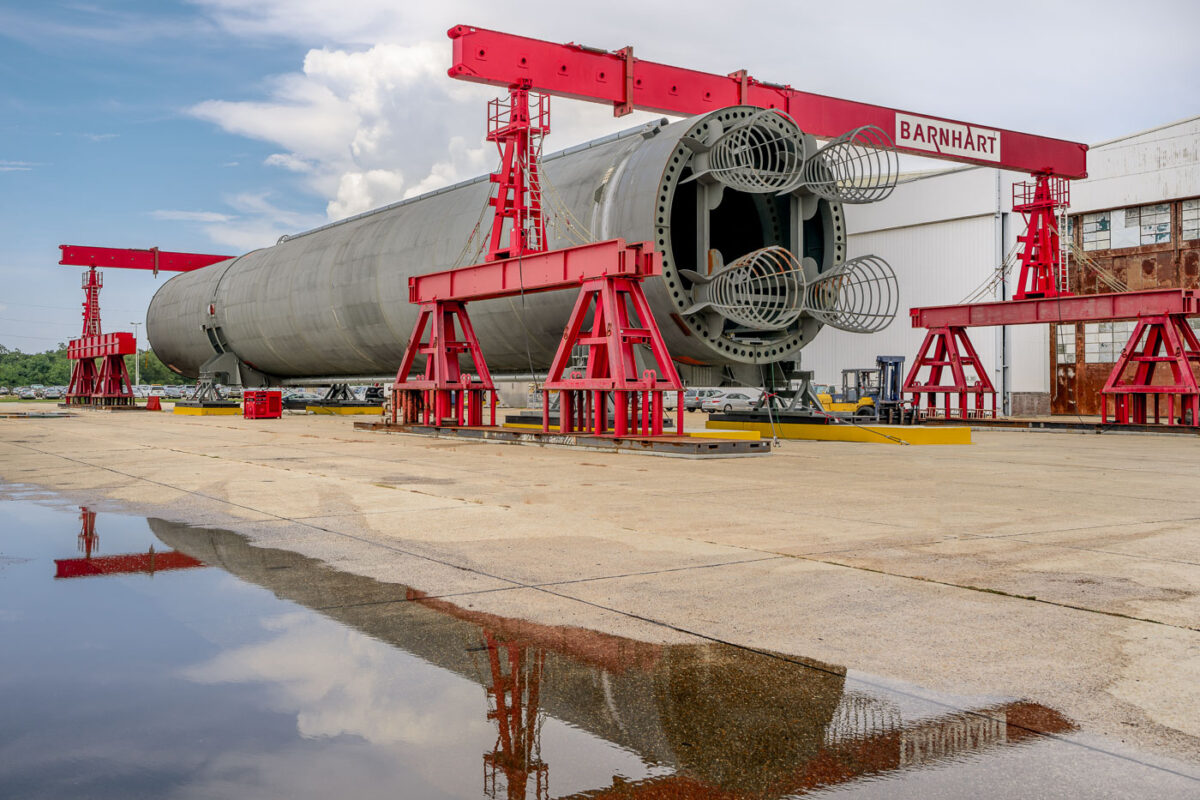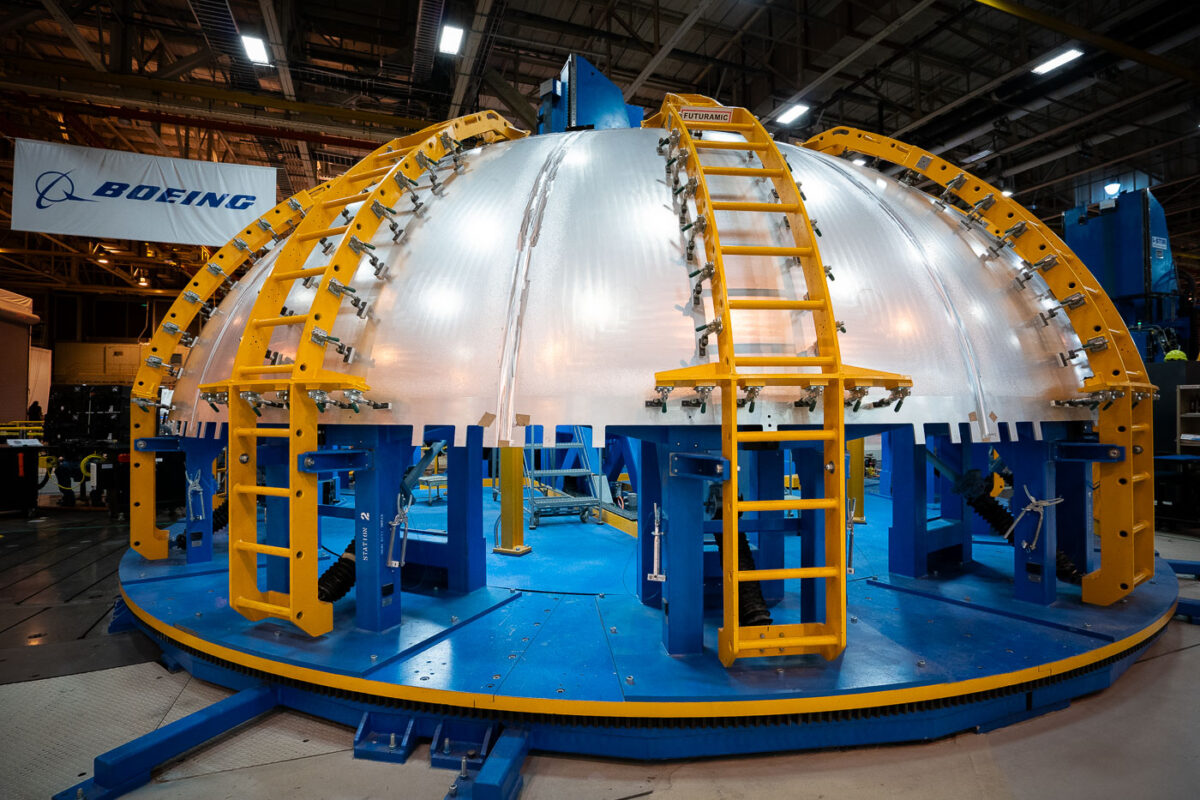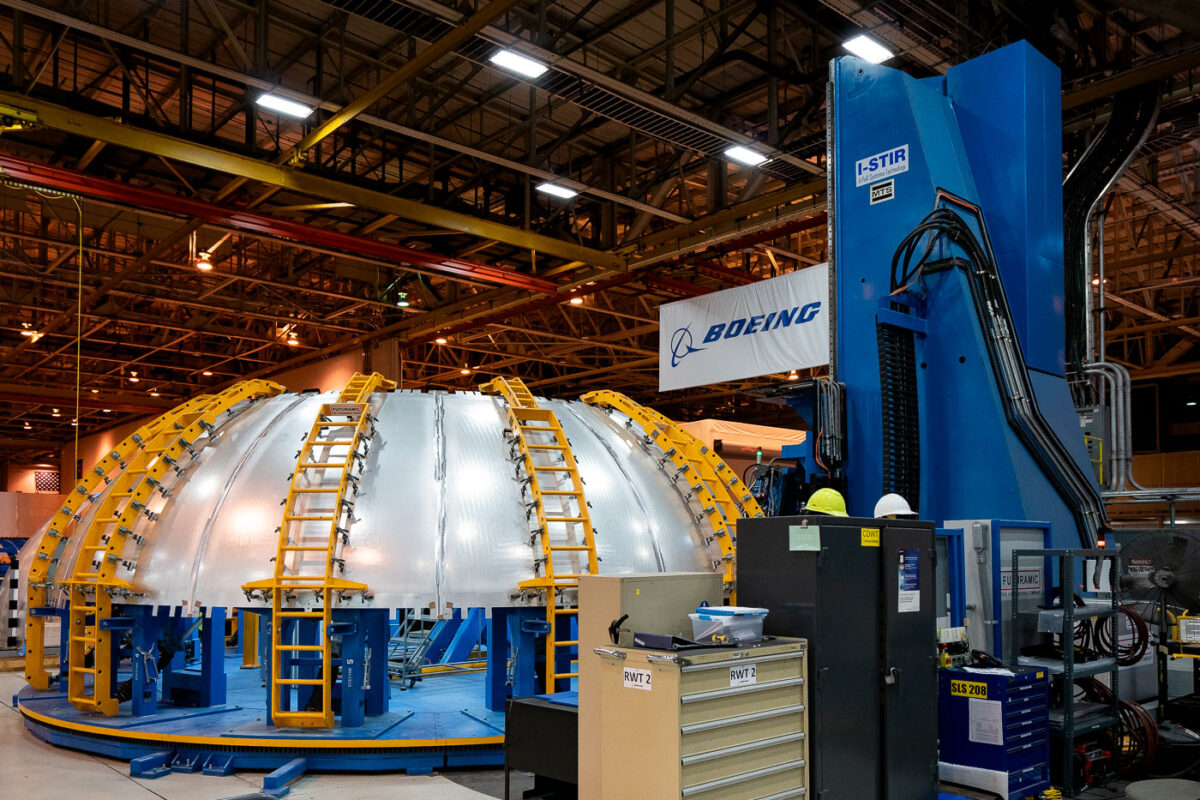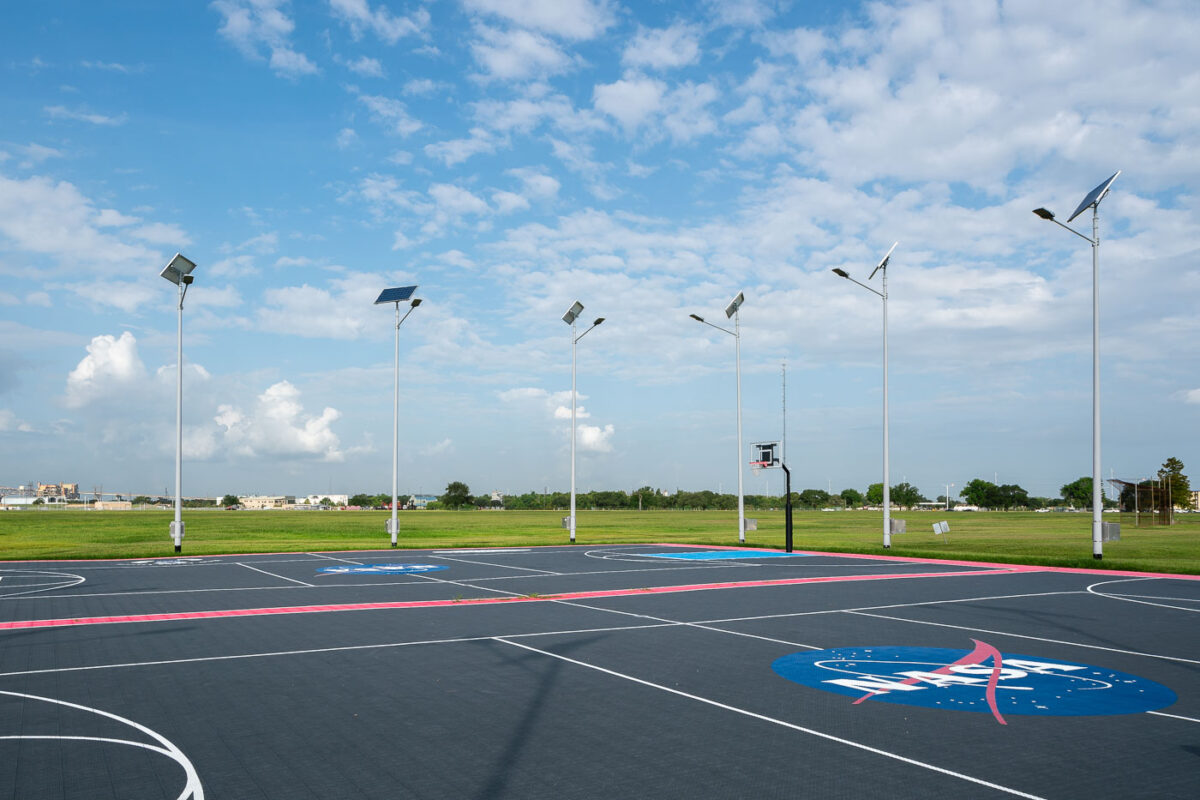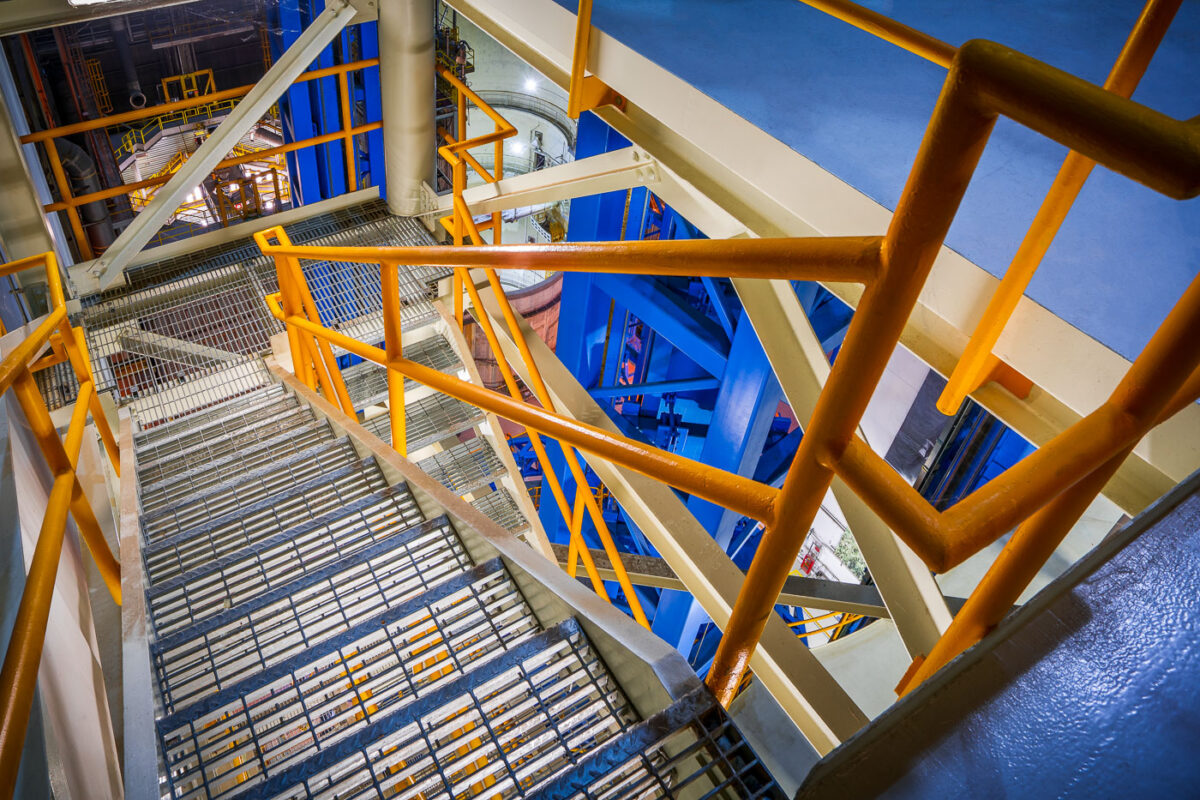
Stairwell Inside NASA’s Vertical Assembly Center
A stairwell winds through the interior of NASA’s Vertical Assembly Center at the Michoud Assembly Facility in New Orleans. The industrial structure, with its orange and blue framework, provides access to various levels of the 170-foot-tall welding system used to assemble core stages of the Space Launch System. The facility supports precision manufacturing for the Artemis program’s heavy-lift rockets.

